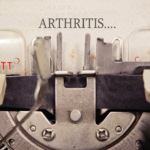Published phase II data on therapies that target IL-17, such as ixekizumab and brodalumab, he said, show better improvement than the currently available drugs to reduce PASI75, and particularly PASI90 and PASI100.3,4 He said these numbers suggest the possibility of clearing patients of psoriasis without the concern of significant side effects.
In the next few months, he expects FDA approval on secukinumab (300 mg) based on the one new therapy with published phase III data showing sustained and high PASI75 response rates.5 The study also shows improvement in PASI90 response, which is associated with greater improvements in quality of life, he said.
Over the past year, these new therapies that seek to attain higher response levels have been providing exciting possibilities for patients and the physicians who treat them to meet the goals of improving joints and, importantly, the significant impact of psoriasis on the skin.
Pathogenesis of Psoriatic Arthritis—Linked to Synovio-Entheseal Complex

Dennis McGonagle, PhD, professor of investigative rheumatology, Section of Musculoskeletal Disease, Leeds Institute of Rheumatic & Musculoskeletal Medicine, St. James Hospital, University of Leeds, Leeds, West Yorkshire, England, walked participants through his research on the synovio-entheseal complex (SEC) that shows that SEC is key to understanding soft tissue inflammation in patients with psoriatic arthritis. Table 1 highlights key points of his research.
Of importance to rheumatologists, he said, is the need to recognize that soft tissue inflammation and bursitis may be due to SEC disease, and that early enthesitis-related pathology may manifest in the bursae or in entities like dacyliits.
Having this better understanding of the disease pathology, he said, will help clinicians diagnose the disease.
To further help clinicians understand SEC, he is building an educational resource on enthesis that can be accessed at http://enthesis.info/anatomy/synovio-entheseal_complex.html.
Clinical Manifestations & Rational Approach to Treatment

First focusing on the clinical manifestations of psoriatic arthritis, Christopher T. Ritchlin, MD, MPH, chief, Department of Allergy, Immunology & Rheumatology Division, director, Translational Immunology Research Center, University of Rochester Medical Center, Rochester, N.Y., emphasized the importance of differentiating true psoriasis from a number of other possible skin conditions that mimic it (e.g., atopic or contact dermatitis, tinea, onychomycosis, seborrheic dermatitis, psoriasiform lesions of SLE, cutaneous T cell lymphoma, acute generalized exanthematous pustulosis [AGEP] and keratoderma) and encouraged rheumatologists to refer patients to a dermatologist if they are in doubt.
Along with the skin, the key domains of psoriatic arthritis that need evaluation are the nails, peripheral arthritis, dactylitis, enthesitis and axial disease.



